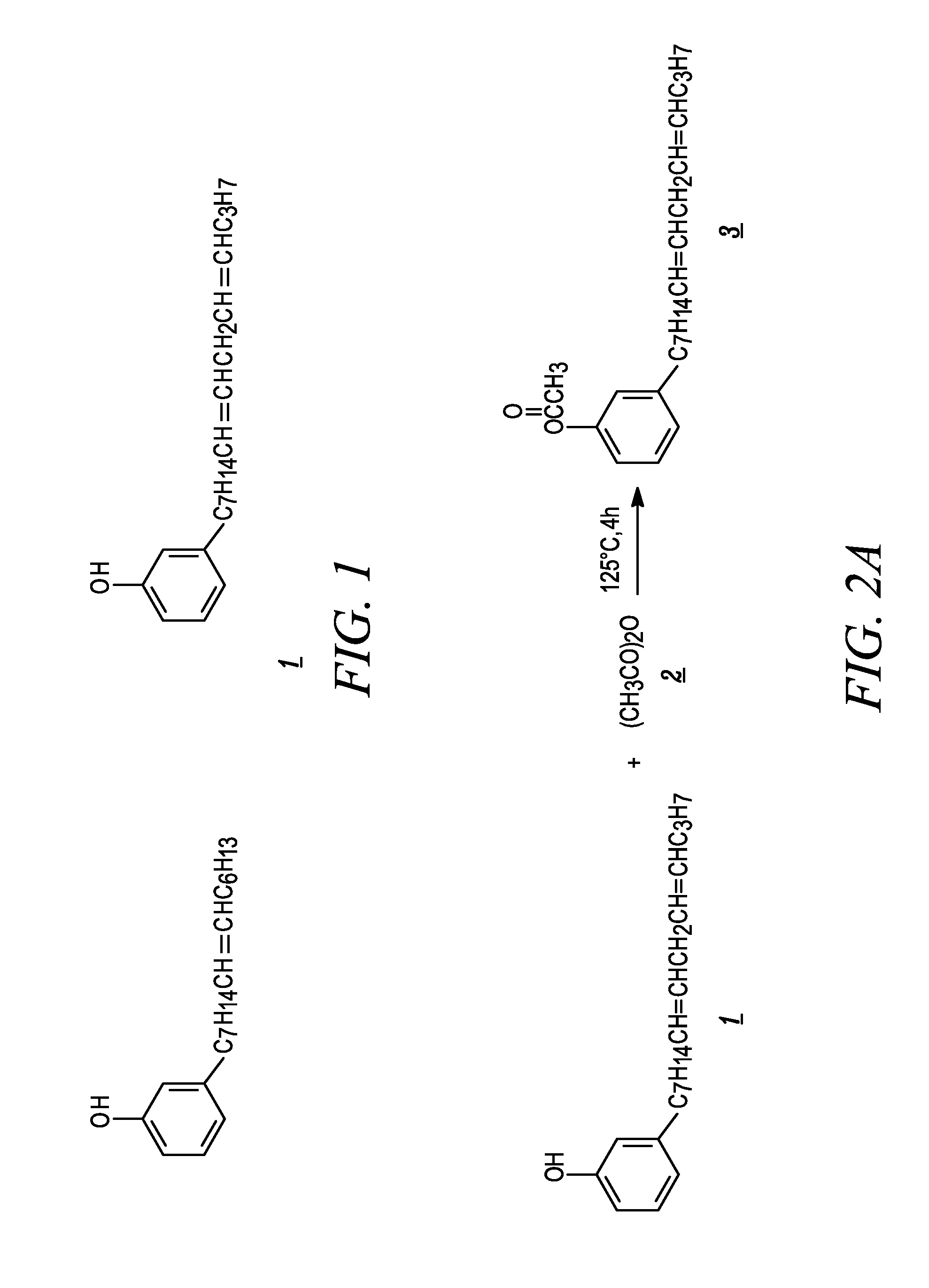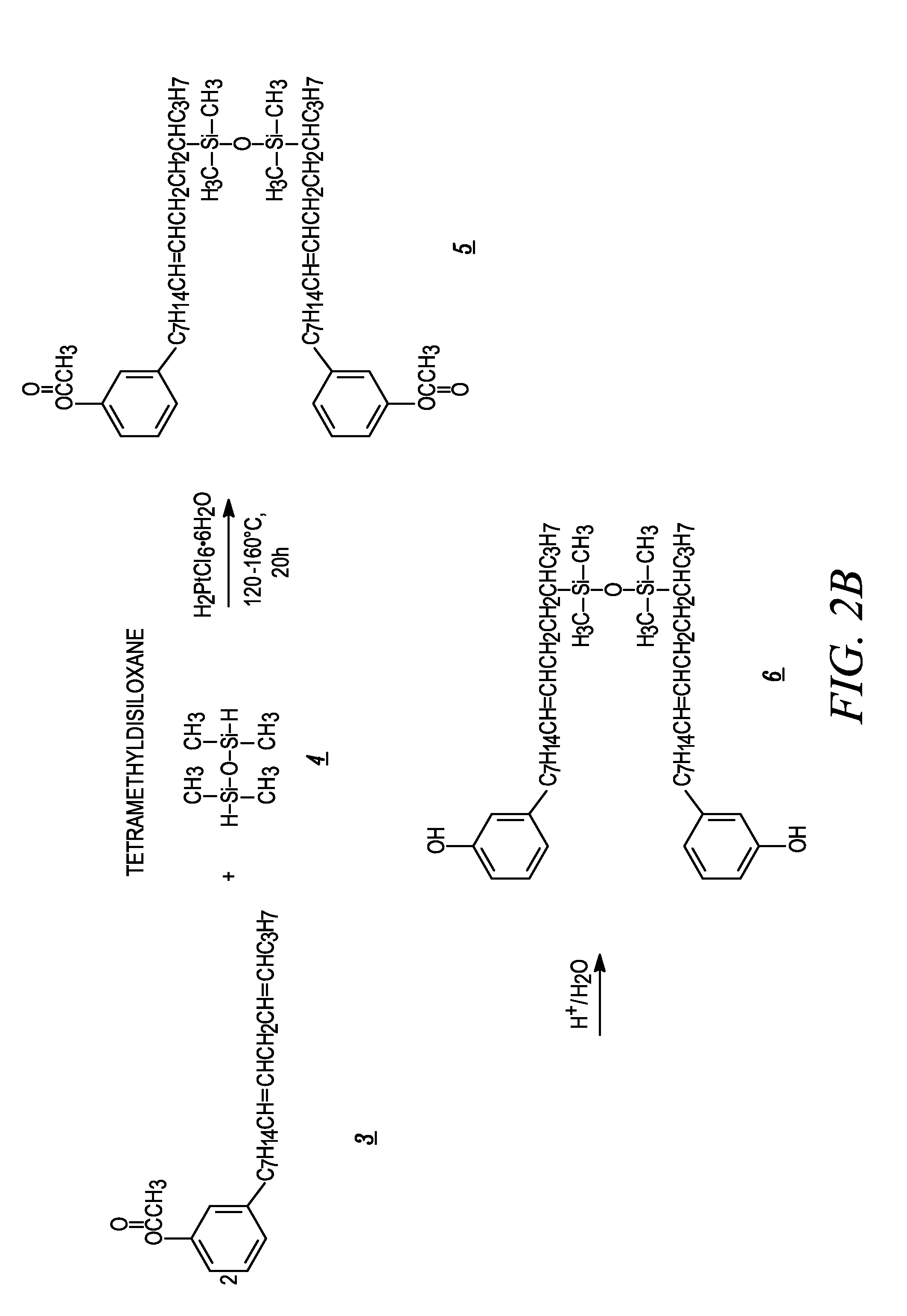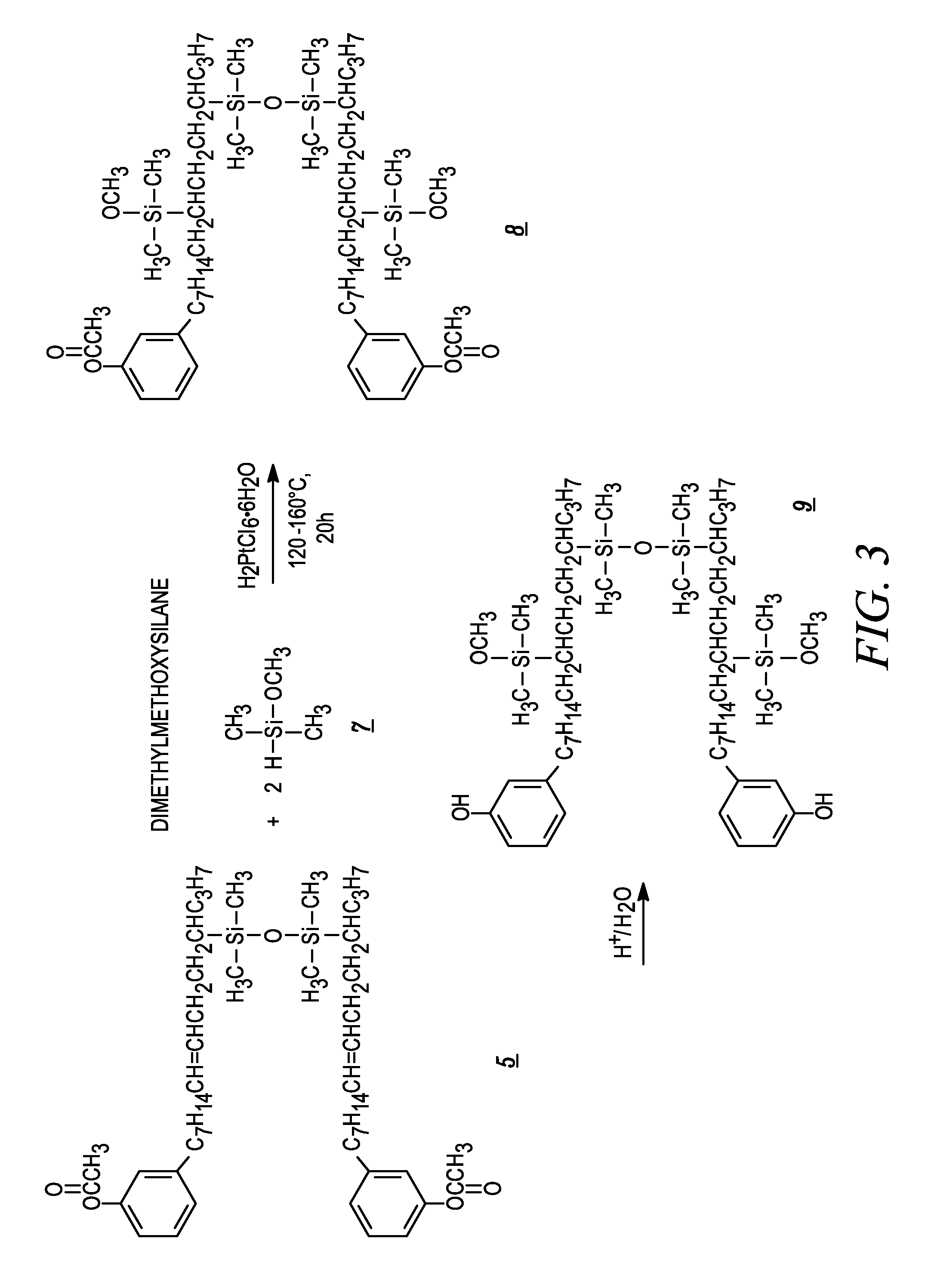Cardanol based dimers and uses therefor
a cardanol and dimer technology, applied in the field of cardanol dimer, can solve the problems of toxicants that are environmentally undesirable, paint will no longer be effective, ship bottoms and other marine structures fouling, etc., and achieve excellent adhesion to metals, low surface energy, and low coefficient of friction
- Summary
- Abstract
- Description
- Claims
- Application Information
AI Technical Summary
Benefits of technology
Problems solved by technology
Method used
Image
Examples
example 1
Synthesis of Acetate Substituted Cardanol
[0075]Acetic anhydride and cardanol are combined in a reactor. In a laboratory setting, the reactor is typically a glass flask. A slight excess of acetic anhydride is used, typically about 20% more than the stoichiometric quantity. The reactor is heated to a temperature of between 120° C. and 125° C. and held for three hours. If desired, the progress of the reaction can be measured by FTIR. Absorption between 3200 cm−1 and 3500 cm−1 represents OH absorption.
[0076]After the reaction is complete, the acetate substituted cardanol is purified by vacuum distillation. Acetic anhydride has a boiling point of 138-140° C., and acetic acid has a boiling point of 117-118° C. Both of these compounds are easily removed by vacuum distillation. After the unreacted acetic anhydride and the acetic acid by-product are removed, the acetate substituted cardanol is purified using vacuum distillation at a vacuum of 3 to 5 mm Hg and a temperature of between 240° C....
example 2
Hydrosilylation of Acetate Substituted Cardanol
[0077]The acetate substituted cardanol of example 1 and TMDS are mixed in a reactor at a mole ratio of 6:1. Speier's catalyst is added to achieve a level of 2000 ppm based upon the quantity of TMDS used. The reactor is heated to a temperature of 70° C. and held for two hours. The temperature is then increased to 80° C. and held for two hours. The temperature is then increased again to 100° C. and held for two hours. The temperature is then raised to 120° C. and held until the TMDS is no longer observed by FTIR. TMDS has a characteristic peak at 2120 cm−1. In one run, the reaction was complete in about 10 hours.
example 3
Hydrolysis of Acetate Substituted Cardanol Dimer to Produce a High Viscosity Dimer
[0078]The acetate group on the dimer of Example 2 is removed by hydrolysis using HCl / H2O. For every 500 g of acetate substituted cardanol in the reactor, the following are added: 40 g of 37.5% HCl, 80 g of deionized water and 80 g of isopropyl alcohol. The temperature of the reactor is raised to 80° C. and held for 4 hours.
[0079]After four hours the HCl, water and isopropyl alcohol are removed by vacuum distillation of 200° C. and 5 mm Hg. The vacuum distillation is continued at 275° C. and 3 mm Hg to remove all free Cardanol. The material remaining in the reactor is a high viscosity cardanol dimer. The viscosity of the material produced in this example was about 9200 cP at 25° C., and the material had an iodine number of about 187.
PUM
| Property | Measurement | Unit |
|---|---|---|
| temperature | aaaaa | aaaaa |
| temperature | aaaaa | aaaaa |
| temperature | aaaaa | aaaaa |
Abstract
Description
Claims
Application Information
 Login to View More
Login to View More - R&D
- Intellectual Property
- Life Sciences
- Materials
- Tech Scout
- Unparalleled Data Quality
- Higher Quality Content
- 60% Fewer Hallucinations
Browse by: Latest US Patents, China's latest patents, Technical Efficacy Thesaurus, Application Domain, Technology Topic, Popular Technical Reports.
© 2025 PatSnap. All rights reserved.Legal|Privacy policy|Modern Slavery Act Transparency Statement|Sitemap|About US| Contact US: help@patsnap.com



